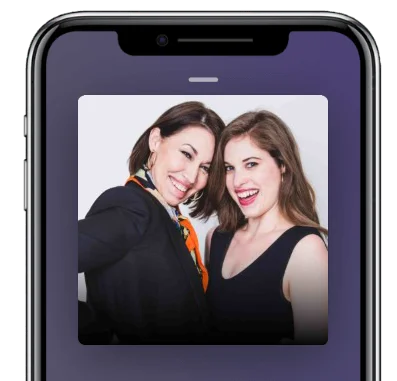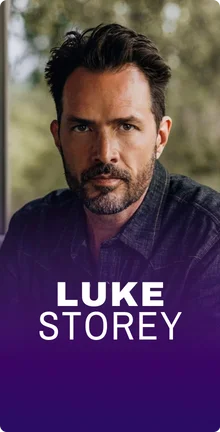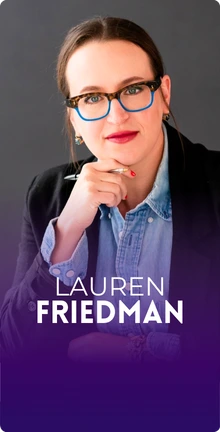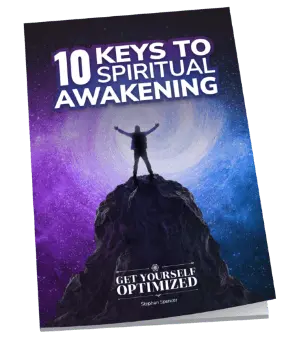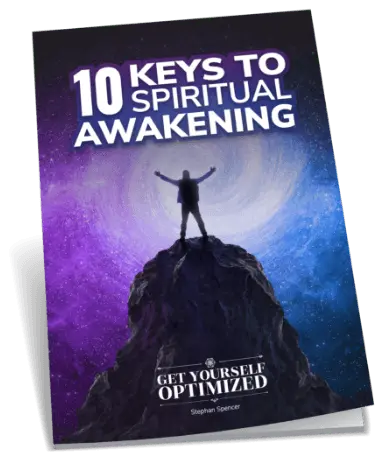In this Episode
- [02:12]Delia and Alison share how they started in the fashion industry and established the mother-daughter team-up, The Style that Binds Us.
- [11:58]Stephan describes the importance of brand stories.
- [13:01]The difference between fashion and style.
- [17:17]Alison talks about chasing fashion trends and emphasizes the importance of the quality of your wardrobe.
- [21:11]Alison and Delia discuss the science behind enclothed cognition.
- [25:54]Alison explains the importance of visual communication, especially in the professional field.
- [30:44]The importance of having items that accent your core wardrobe pieces.
- [33:26]What is fast fashion? What are the alternatives to it?
- [41:04]How to find your style?
- [45:17]Delia advises on how to elevate your style.
- [49:52]Delia and Alison discuss how you show up even in virtual interviews affect the perception of others to you.
- [52:07]How important is a closet cleanse?
- [54:46]How to get inspiration for style from the internet?
- [58:06]Delia shares tips on blocking out the noise in modern-day life regarding your style and how to make dressing easier.
It’s great to have you both on the show. Thanks for coming.
DF: Thank you so much for that introduction.
Let’s share more of your origin stories of how you ended up focusing on fashion as your life’s mission.
DF: It’s evolved. In college, I needed to come up with a career, so I decided to move to New York and work in fashion. I had one connection, and then Mom and I came to New York over spring break. He said, “If you want to work in fashion, these are the things to do.”
I went back to school. I went to William & Mary. They didn’t have anything about fashion, so I chose the course business major in marketing. That’s how I got into it.
I was trying to break into an industry I didn’t know much about or many people working there. I said, “Okay, Mom, I have seven interviews next week plus all these exams I must study for. Let’s split up these seven companies. Can you study the history of these companies?”
Through that process, they reawakened her love of style. That led her along the journey to FIT, taking that image consulting certificate course, and then she learned the science behind dressing and became a stylist.
We were working in the same industry and organically working together because I frequently shared all the brands I discovered at Barneys so she could introduce her styling clients to the latest and the greatest brands. We started separate blogs and combined as a mother-daughter company to create The Style That Binds Us, a media company and consulting agency.
Traditionally, caring about fashion or paying too much attention to yourself was considered vain, but you were always expected to present yourself nicely.
That’s awesome. Alison, why don’t you share a bit more from your side of it?
AB: I’m the mom. I grew up in the South of the United States. Traditionally, caring about fashion or paying too much attention to yourself was considered vain, but you were always expected to present yourself nicely. I had always been interested in fashion, but I tamped it down because I knew that was not such a lofty goal. At least, that was what was insinuated.
Getting older and realizing it’s less about the latest trends or how others dress. It’s more about the fact that you can enhance yourself or sabotage yourself by what you put on your body, and you can direct what you’re wearing to the occasion if you know how to do it.
People always say, “I don’t know how to find my style.” I’ve thought about this so much lately because everyone picks a style. “I want to look like Jackie Kennedy or Taylor Swift; I like how they dress,” and then they try to emulate that. But if they have a different body type, it’s just never going to work, but they can’t figure out what’s wrong.
I learned about each body type, what you should wear, and what doesn’t work well. Then once you understand that, you can develop your style aesthetic. I finally realized that it is not a shallow and vain to care about your appearance and how you dress. It behooves you to create your best visual representation.
How did you guys end up deciding that this would be a mother-daughter team? Was that a long-time-in-the-making dream for you guys to go into business together, or did that unfold?
DF: Especially not for Mom. Mom, would you like to answer this?
AB: We were in adjacent industries. I’m working with women, and Delia is working with designers. We were already connecting the two, which was very fulfilling. But then everybody kept saying, “You need to work together.” I didn’t want it to be like a mommy and me thing, almost like I was a mascot. I wanted it to be a serious endeavor.
When I realized that coming together served several purposes. First, we could reach and help a wider range of people, mainly women. That would be super helpful, certainly more than one-on-one. We often talk about how Delia wears it, and this is how Alison wears it when we’re making videos and things like that so a larger group of women can participate.
It’s wonderful working with your child. We share the same passion for it. It is about looking nice and dressing for your body type, but also helping others in some way, especially women. It’s a cliche now, almost, to say we were empowering women, but that is literally what we’re doing every day.
Once you understand what you should wear and what doesn’t work well, you can develop your style aesthetic.
A mother-daughter family business is often a safe place to land. If you’re a little bit unsure of how you should dress, or maybe everyone that you’ve followed before was some ideal that you would never be, especially for women, this way it’d be like, “Oh, they look like me, or they dress the way that I could see myself dressing rather than something on social media or in magazines where you see models and everything. If we can do this, so can you. Come along, and we’ll all be stronger together.” That’s why I agreed to do it, and I’m so glad I did. Delia, what else did I miss?
AF: For our blogs, the content that we were covering, Stephan, when you’re starting a company, one way to do that is thinking about the questions people consistently come and ask you. And what is your zone of genius? What experience do you have?
For me, on day one at Barneys, retailers weren’t telling brand stories digitally or in person. Why would you buy into a brand you’ve never heard of versus a well-known brand unless someone romances you and tells you that story? Then I thought, “I know these incredible founders, and I want to introduce them to those I know that live in fashion deserts, as mom calls them, the people everywhere else besides LA, New York, or Paris, these fashion capitals.”
Even in New York, it can be hard to navigate shopping and figuring out what to wear. That was what I was doing. I also discussed creating the resource and guide I did not have when trying to break into fashion. Talking about how to get into the fashion industry, what it is like when you’re in it, also just general career ideas, and thinking about, “Okay, what am I personally going through? How can I use and share that information with others to help them in their life?”
For Mom, it was two things. It was all the questions that women were asking her when she was working with them in their closets. Also, as Mom was getting older, she had a lot of questions and changes in her body. That took many years, but we created a celebrating life after 40 verticals.
That’s a bit. Yes, thankfully, she did. People started mentioning it. “You all should do something together and have such a great relationship. You’re in the same industry. Why are you not?” This is such a point of differentiation. There’s not another mother-daughter in this space, nor is there a company if you all combine like this, so you should consider it.
It took some time. I wanted to start a YouTube channel and podcast to bring the blog to life. Thankfully, Mom decided that she could do that with me.
AB: It’s been an adventure. Many things that I said I would never do, I did and do.

How long has the business been going for?
DF: Five years.
Awesome. How long have you guys been podcasting and YouTubing?
DF: Since day one. We started with everything instead of a newsletter and adding things. We just started with a bang.
Nice. Okay. How many episodes are you on the podcast?
AB: Gosh, a lot.
DF: I have no idea. We used to do it weekly, and then it depends on since we’ve added other things like a mini magazine, and we have a lot of different verticals. It’s not every single week.
Okay. I recommend numbering them. That way, you can call people to go to Episode 312, and then they don’t have to write down the guest’s name, the topic, or the episode’s name. You can have a redirect from thestylethatbindsus.com/302 for episode 302. That’s what I do.
I’d send people if there’s a related episode on fashion or whatever I could say. Check out episode 8 with Luke Storey, which is all about men’s fashion.
AB: We have a blog that goes along with each podcast, with our favorite pieces from the brand or the designer. We direct them to the blog, and then they read a short blog. They can get into the podcast and shop from one place, but they must search at the top of the blog; maybe we should number it.
Fashion is the latest trends and designers.
A long time ago, in 2015, I interviewed Luke Storey, co-founder of the School of Style. That’s getyourselfoptimized.com/8.
AB: Okay, great. I’ll remember that.
How important are brand stories so people feel connected and want to wear a brand they haven’t heard of before? Years ago, I heard, “A brand is a promise delivered.” Have you heard that definition of a brand?
DF: What does that mean?
If you relate that to a brand story, you deliver that promise through the arc of going from rags to riches. Or from an evolving style that came out of somebody’s basement, and then they built a big brand that might resonate with somebody. They’re coming along for the ride and part of that brand promise.
AB: It creates loyalty to your brand.
Let’s talk for a minute about the difference between style and fashion. Is there a difference? If so, what would that be?
DF: There’s a difference.
AB: Do you want to talk about it?
DF: You talk about it.
AB: Fashion is the latest things, the trends, the latest designers, and what’s happening in the fashion space. Someone who knows nothing about fashion can have an incredible style. Also, style is the way you live your entire life. It’s not just what you put on your body, it’s how your home is decorated. It’s where you travel. If you love art, whatever your style is, it is how you create this space around you of all the things that lift you and you’re passionate about.
It’s that je ne sais quoi, where no one quite understands how that happens or how that person does it, but they can just tell. Much of it has to do with really taking time to think about what you feel passionate about. Sometimes people will say, “I don’t even like blue. Why have I been wearing blue? I’ve got blue all over my house. That’s what my mother wanted me to wear.”
Dressing classically, you must invest in pieces you can have for the rest of your life.
At a certain point in life, they suddenly realize, “I loved this. Why am I not surrounding myself with this?” The more authentic you become to yourself, and the more courageous you are in saying, “Maybe that’s what society wants me to like, but instead, this is really who I am,” then that’s when people start going, “There’s something about them because you’re comfortable in your skin.” That’s what personal style is to me.
What’s the difference between a trend and something more evergreen that stands the test of time? There’s a trend to have baggy sleeves for women’s blouses, but who knows if that will happen next year? Then some things are classic, and you can keep wearing that for ten years.
DF: Yes, we recommend it. Dressing classically, you will invest in pieces you can have for the rest of your life. For example, we’ll do a trend report on The Style That Binds Us podcast every season. At the end of that, we say, “For you to know, these are all the trends that will be very popular this season.” However, what’s insane is that everything is a trend right now, and they always come back around. Also, there are all these made-up random things.
The life of a trend these days could be like a day. It’s insane. This can get very confusing even for us who work in the industry. It’s nice to take out the noise, get back to who you are, and then figure out what you want your wardrobe to look like.
When mom works with clients, she ensures they have a core wardrobe. That is the chic, timeless evergreen pieces that are pretty seasonless. That’s the secret to getting dressed. You can mix and match those in millions of ways and then add in statement pieces.
At the end of a podcast episode, we always say, “This is FYI. You now know the trends. We recommend you pick one or two trends you are most excited about.” Then we’ll say, “Okay, this season, I’m so excited about X, and I’m looking forward to getting that,” instead of, “I’m going to Zara, and I’m buying every trend. That’s cheap.” Not only does the trend not last, but the quality of that piece doesn’t last long. It could be for one wear.
The life of a trend these days could be like a day. It’s nice to take out the noise, get back to who you are, and then figure out what you want your wardrobe to look like.
What’s the point of living your life like that? We want to escape that fast fashion, just consumer culture, and be more thoughtful about what you wear. You can be individualistic but still feel comfortable in your skin.
We were talking about personal style, thinking about “Who I want to be today and always. Do I want to change that?” And using fashion as your nonverbal communication to the world of who you are and how you’re showing up for that occasion every day.
What do you tell somebody who’s chasing a trend?
AB: That’s okay. They’re probably fashionistas. That’s their thing.
When you think about Princess Diana, she wores as basic as you could get if you can picture her when she was in her casual clothes. But when you want that look, but you can’t figure out why I’m wearing a button down, a little pair of capris, and a little loafer, and I just looked pretty underwhelming, what makes that so special? That’s when you have to make sure that the quality of the pieces doesn’t have to be designer, but it has to be well-made.
The whole body, like your hair, skin, makeup, and everything, is not just the shirt and the pants you wear. Also, maybe you don’t have a body type like her. I’d love to dress like Audrey Hepburn, but I don’t have a body type like her, so I could never pull that off. Or Coco Chanel, that’s not my look. That’s for more like boyish figures.
It again goes down to your body type or even your coloring. The hot pink trend is huge because of the movie Barbie. If you know that hot pink looks good on you and it looks good on most people, then this is your year to stock up on pink clothes. But that doesn’t mean cheap pink clothes that will melt when you iron them or are barely put together.
That means I will wear this for the rest of my life because that color looks great on me. If you say, “Well, I have to shop fast fashion because the other things are too expensive,” that’s when you go to consignment shops and thrift shops. I have a client right now that said she loves Max Mara, for years, she has thrifted. She buys everything from Max Mara, but it’s from a thrift or consignment shop.
It takes more time. It’s like you’re building an art collection. She knows that the brand works well for her. She knows how unbelievably well the pieces are made. It’s also a style that can accompany you as you age.
That’s the other thing people get confused about. When they’re 30, they’re like, “Can I still wear cut-offs? Can I still wear a little mini skirt, baby doll dress-type thing?” If you feel you shouldn’t, then you shouldn’t.
If you’re starting to question it, that’s your answer. You can ask a million people, but you’ve already answered it yourself. You’re just looking for someone to permit you to wear it still. But if your clothes are classic, you can wear those when you’re 20 and wear them when you’re 75 in different ways.
If you feel you shouldn’t, then you shouldn’t.
Having a mix-and-match approach, where you wear the same shirt in different ways with different kinds of outfits that, makes you more versatile, and you’re not as stuck.
AB: When I enter a women’s closet, they don’t shop that way and have a million clothes. You’ve never seen so many clothes, but they can’t put together a look. They have too much stuff and do not have enough core pieces to pull things together.
If you think these clothes are more expensive, wear that button-down skirt with jeans and the ball gown. Those are the kinds of pieces that you get in. When you get better quality clothes, you take better care of them too. When you wear them, you feel special. That all comes out.
That’s important. You don’t want to wear stuff that makes you feel like a bum or not put together.
DF: There’s science behind it for you, your brain, and the person looking at you.
Speak more about that. How does that work for your self-image in terms of brain science? How does it show up for the other person who’s judging you?
AB: First of all, they’re not judging you. I’ll let Delia explain about enclothed cognition. Some people are judging you. I walked into Central Park, and we’ve always heard this, people look like their dogs. There were so many people in the park today that looked like their dogs. It was remarkable.
What we know rather than people judging other people is our brains, from the days of the cavemen. Our ancient brains always look for patterns when looking at someone they can relate to that seems similar. When people and dogs don’t know what they’re thinking. That dog has the same hair color as mine, but its brain forms these patterns.
It’s the same thing when meeting somebody for the first time. Your brain is looking for a connection. If they’re very different from you, messy, their hair is wet, and you’re a type A person, you will immediately think, “Oh, I bet they’re probably always late,” or “I don’t think they will be very organized.”
Those are the attributes that people accent on, more so than he’s not cute or I don’t like how she looks. It’s more just these attributes that your brain is coming up with without you consciously knowing it’s happening.
DF: When you’re walking and see someone, these are the different qualifiers of this person approaching me. It’s subconscious. It’s not about judgment.
Within a few seconds of seeing or meeting someone, our brain decides. Are they promiscuous, intelligent, leadership material, sophisticated, literally based on the image? How do you present yourself to the world? That may or may not change based on how they act outside of how they look. That’s something to know.
You are a mirror of what you put on your body. How you carry yourself, and dress is a showcase of how you feel about yourself. If you feel super confident, you put on an outfit. You are dressed to the nines and feeling fabulous. You walk into that room with confidence, head held high, and then people will treat you and see you showing up as that, versus if you’re feeling very subconscious, maybe you’re feeling like you wish you could lose some weight or something so you’re going to wear oversized baggy clothes, “I wish no one would look at me.”
You have to ensure that the quality of the pieces doesn’t have to be designer, but it has to be well-made.
You’re a mirror because it’s how you feel you will show up that way. Based on how you dress, people will treat you differently. Of course, if you show up to the airplane in pajamas versus a suit, you will act differently, and everyone else will act differently toward you. Not in a mean way, but it’s just how it goes.
Yeah, human nature.
DF: Enclothed cognition. It’s your brain. The example we kept trying to tell people during lockdown was that if you’re wearing comfy, cozy clothes, your brain thinks it’s time for a nap, “I’m sitting here working, but I’m feeling so cozy and ready to nap.” If you put on that blazer and you’re prepared to work, it does mimic other people, “I respect myself and my workplace.” But it also signals to your brain, “I’m in professional mode, and I’m ready to go.”
It fascinates me, and this may not happen to you. But if I put on an outfit or anybody, you embody that. This Taylor Swift Eras style is going insane. If I put on this eyelet cut-out top with cut-off shorts and cowboy boots, and have a guitar and take a photo or a video, I’m channeling Taylor Swift and everything she represents.
If you walk into a doctor’s office, and someone comes in and meets you in a lab coat because of what they’re wearing, you’re looking at this person and saying, “Okay, expert. This is the person who is the doctor who’s speaking to me.” They could be some random person off the street, but it is how you embody your clothes.
AB: Or the resident. They come in, and you think they’re the doctor, and they’re like, “No, I’m just getting your information. I’m just a resident. The doctor will be in soon.” You had to assume they were the doctor because they were in their lab coat.
What was that term you mentioned earlier about cognition?
AB: Enclothed cognition, that’s twofold. It’s how people think of you and what your brain is getting signals from about what you put on your body. When I work with clients, I’m like, “This is what you’re going to wear when you have a difficult conversation that you have to have, and this is what you’re going to wear when you want to be seen as approachable. This is how you would wear your hair.”
When you get better quality clothes, you take better care of them too. When you wear them, you feel special.
It depends on when I work with someone like a child psychologist. They should not be in a suit, blazer, or tailored shirt. They need to be soft, like a cashmere sweater for a man—something professional looking but something that looks like they’re friendly.
For the woman, don’t have your hair tightly in a bun and sit behind a desk. When a traumatized child comes in, you want to be able to sit in a chair where you can lean down close to them, your hair is down, your clothes look soft, and there’s nothing scary about you except that they know you’re a grown-up, and then they can open up and feel they are in a safe space.
Once you know those things, I talk about sabotaging yourself if you don’t know them. You won’t have as many clients, so the child will walk up crying. You’re interviewing for a job, but you don’t understand that they will not think it’s good that you came in with your hair wet because I always see that.
You don’t want to say what’s up and all these kinds of things that you didn’t even know. No one had explained that to you, and you’re like, “You mean I can’t wear jeans or white jeans to an interview?” No, you can’t.
First of all, you need to study the culture. It’s common sense, but many people don’t understand that. Your visual communication is more memorable than what you say.
DF: Over 55% of communication is nonverbal. If you’re giving a presentation, the first thing they’re paying attention to is, “Who is this person?” Then if you’re going to be distracted, it’s insane.
You could be so distracted by something that they’re wearing. “I can’t believe they’re wearing a crop top to the office.” You can’t even hear what they’re saying. But if you have thought about it in your presentation professionally, and you’re going on about it, then they’ll be able to listen to what you’re saying in the presentation.
The visual part of that is even more important than the content. People think I’m a professor, and my style doesn’t matter. My work or my intelligence speaks for itself. It does not speak for itself. It can, but you also need to play the part visually.
Yeah, that makes sense. I’m reminded of this funny YouTube video of a guy showing off a work-from-home Zoom suit that was just at the top. He had the whole jacket thing and tie, and it was all fake because it was just one piece, and it was just the top part. It wasn’t even the back.
DF: Right. They’re messing themselves up because your brain knows that. If you’re wearing fast fashion, people can say, “Oh, you can buy into fast fashion. Who will know?” You will know. Your brain will know that this is what you’re wearing.
Of course, if you cannot afford it, go consignment and thrift. You can also get pieces tailored to fit your body. Even if you’re shopping at Target, Walmart, or a low-priced brand, there are ways to look more expensive, so it’s not just off the rack.
Right. One of the things for men, the style currently, is not to have wide-legged pants. If you have wide-legged pants and love them, take them in to get tailored if they can fix them.
AB: Wide-legged pants and pants with pleats for men are coming back.
Okay, I can’t keep up.
AB: I’m excited about it. The super skinny pants, the super skinny collared shirts, and everything work well on European men because, for the most part, they’re smaller and thinner. But for many American men, it’s uncomfortable because they’re squeezed into these clothes. I was reading about that yesterday and was happy to hear that.
One of you mentioned things that accent your core wardrobe items. How does that work? Is it to add personal flair? There’s peacocking.
AB: That’s hysterical. It’s more about, if people say, “Well, okay, now I have my white shirt, black pant, navy blazer,” that’s when you get to add the scar, you add a cool shoe, or guys add cool socks a lot of times now or interesting belt—those kinds of things where you’re having fun with it.
Enclothed cognition is how people think of you and what your brain is getting signals from about what you put on your body.
Unless you’re the type of person that does want to wear Gucci loafers so people know that’s Gucci loafers, which is also like an unspoken connector thing, “Oh, yeah, I have those things too, you’re in my club,” but more it’s about, now, when you see a cool jacket, sweater, shoes, or anything, that maybe has more going on, you know what you’re going to put under the jacket. You have the basic pants that fit your body well.
That core wardrobe part is not necessarily lots of fun. It’s hard work. You don’t end up with four almost white shirts because you didn’t want to spend the money to get that one white shirt that’s made of good quality. You can tell it’s a beautiful piece, but you don’t want to spend the money.
The same thing with pants. You have to get everything altered, like collecting an art collection. It’s just one at a time. Some things are on a list of one day, like a smart-looking trench, if you work especially in the city. Also, trenches are great just because of the weight of them. They work better, especially now with climate change. They’re a good weight, and you can wear them for dressier things, you can wear them with jeans, and those kinds of things.
You’d want to spend more on that piece, but you’re currently trying these other core things. That goes on the list of them. “I’m going to look for them on sale. These things go on sale probably in July when nobody’s wearing them because it’s hot. I’ll see what I can find then.” That part is just the hard part. That’s putting the furniture in the house.
The fun part is finding a colorful chair, great pillows, or curtains. Or a cool earring for a woman, things that bring joy to the person wearing them. The perfect black pants don’t necessarily bring happiness or a suit for a guy that can be worn in many different ways, but they know it’s there. Once it’s there, they say, “I cannot believe how much I wear this.”
Yup, it makes sense. Let’s define that for our listeners who are unfamiliar with the term fast fashion.
AB: Fast fashion just means it’s made fast, and it’s made very inexpensively. The problems with it are that it doesn’t hold up, a lot of it. The fabric is not natural, so it’s really hot. When you try to iron it, sometimes it does melt.
Also, the most important thing to remember is if you can batch a shirt for $20 or $10, someone has suffered in making that. It could be in the factory, it could be in the store, all along the chain. You can’t just do the labor alone. It doesn’t make sense. It’s too good to be true.
Use fashion as your nonverbal communication to the world about who you are and how you show up for that occasion every day.
When people buy it because it’s so cheap, they don’t feel bad about it. “I don’t like this anymore. I’m just throwing it out,” and they add new things every six weeks. It’s like a drug. “I will go back in and see what they’ve got now.” Then you end up with all this stuff in your closet, but it’s not something you would necessarily wear if you were going somewhere special because, like Delia was saying, it’s Zara, and somebody else might be wearing it. You might feel funny if you’re at a wedding reception and you’re in a Zara dress.
The worst part, besides the fact that someone suffered, is where is all this stuff going when people get rid of it? It doesn’t dissolve back into the earth because it’s not natural fiber. It’s stacking up in landfills everywhere and polluting the earth. We’re having all these problems with climate change and everything else.
I understand that feeling of adrenaline when you go somewhere, and you get it. If someone says, “I got five shirts and spent $40,” you’re like, “Oh my God, that’s terrible.” It’s more quality, like, “Oh, I’ll buy this beautiful shirt and keep it for the rest of my life. I’m so excited to have it because I can wear it in many ways.”
I understand, “Okay, if I buy less, I work every day at the office now, so I’ve got to have all these. I can’t just wear the same thing repeatedly.” It’s having those accessories and things to change the look and then being thoughtful of work.
It’s not like you go and buy up a ton of $5 paintings and stick them all over your house where there’s no wall space left. You want it to be something representative of you, and that when people see it, they’re like, “Wow, how did she do that? How does he do that?” People are drawn to you. When you respect yourself, people will treat you with more respect.
You can get these fancy designer brands at cheap places like TJ Maxx and Marshalls. But those aren’t the same clothes. They’re not the ones that are made in the same factories.
AB: No, you’re right. They buy the overflow or what’s left over. That’s the thing too. There is a consignment shop near where I live.
That’s where you don’t go to a consignment shop or a thrift shop saying, “I’m going to find the perfect dress for this wedding I’m going to because you don’t know what you’ll find there. It’s not like they will have ten sizes of the same dress. It’s more like going on a treasure hunt, so it might take longer to find something.
Also, it is where you’d pop in and say, “They may have a trench on my list.” Or, “I’ve been looking for so and so’s shoes, and I will pop in here because nothing is being made new.” It’s there. If it’s in good shape, it’s already been made. You’re just one man’s trash is another man’s treasure. You’re giving new life to something, and that feels good too.
Be thoughtful about what you wear. You can possess a unique style and still feel comfortable in your skin. Share on XCan you take shoes into a cobbler to refresh those, like you could take your pants in to get tailored or altered by the tailor? Do you do the same thing for the shoes?
AB: It’s a very smart idea. I’m glad you brought it up. People will notice your shoes. People will see your briefcases, backpack, purse, and coat. The entrance and the exit, they’re always going to remember. But also, if you’re sitting at a meeting or anything, you think about it.
Now that I’ve said that catch yourself looking at their shoes the next time you’re somewhere. If your shoes are scuffed and worn out, it’s like, “Aha, they’re put together, but there’s the outlier. Those shoes look like they’re 25 years old.” You just take them into a shoe shop, they resell them, and they buff them up.
Also, when you care for them at home and don’t just throw them down, I always tell people to take either shoe inserts or crumpled up like tissue from a shoe box. When you remove your shoe, stick it down to retain its shape. Otherwise, the shoe is eventually shaped to your foot and looks old and worn out. You can do many things to treat your clothes better, and then they last longer and are nicer.
Can you define the term ready-to-wear?
DF: Fast fashion also has no resale value. That’s something to keep important if you want to live your life circularly. You can always think, “Okay, if I purchase or invest in something, I can always resell it if it no longer fits my life.” But if you’re purchasing brands at a certain level and below, consignment stores don’t want it. You can sell it on Poshmark.

AB: I don’t know if they’ll do it or thrift shops anymore.
DF: Ready-to-wear is that standard-size scale. It is made in many different sizes and goes to stores, whether a boutique or the brand’s store. You can purchase that, versus having the pieces in the past made, tailored, specifically for you and not many, if any, other pieces exist like that in the world.
There’s this term ‘bespoke.’ When I lived in New Zealand, I heard that term. That’s just custom, right?
AB: Right. You know you’re going to spend a lot of money, but what comes to mind always is Savile Row in London. That means you go, and you have a suit made for you. You pick out the fabric, measure you top to bottom, cut the muslin, try it, and then once you feel good about it, then cut the fabric and make the suit. It’s a process that you’re involved in.
Those suits are incredibly well-made, and that’s like my grandfather. He wore the same suits his entire adult life because they wore that. They were so well-made and taken care of. I don’t even think he had a pair of jeans. It was always a suit, like those pleated pants and a collared shirt.
It is a great experience. Even if you do it once in your life, you can also do it with shirts. Especially it’s a good idea if you are not the average size. If you’re so much not an average size that the alterations will be crazy expensive, you might as well just get the suit made for you. Once you get the suit made for you, that place of business has your measurements.
Embrace authenticity, embrace your true self, and watch as the world takes notice. When you confidently show the world who you are, people are drawn to your authenticity and the undeniable sense of comfort you exude. Share on XHow do you find your style?
AB: You have to start with your body type. People think they don’t have any style because they keep trying styles in their head, the way they want to look, but they don’t have that body type.
Then they get discouraged and feel like they can’t figure anything out. They have no sense of style. But if they had picked someone with a similar body type that might work for them, they would have had a lot of confidence. They just didn’t know that when you have a certain kind of body type, this is the pants you wear, this is the top.
You must consider balancing your top and bottom half if you’re like a pear-shaped person. But if someone is more petite up here and trying to do something, big pants with floral stuff, they’re just making their bottom half look bigger and their top half even smaller. They’re like, “Why isn’t this working for me?” It’s not that you don’t have style. It won’t work for your body type.
You get to wear botnet tops, tops with epaulets, puff sleeves, and all these things that will create balance. Once you figure that out, like, “Oh, now I get it,” and then the rest of your life, you know what to go towards and away from.
That makes sense. In school, I learned about three body types: mesomorph, endomorph, and ectomorph. Is it something you work into your vocabulary with clients, or is it pear-shaped or apple-shaped?
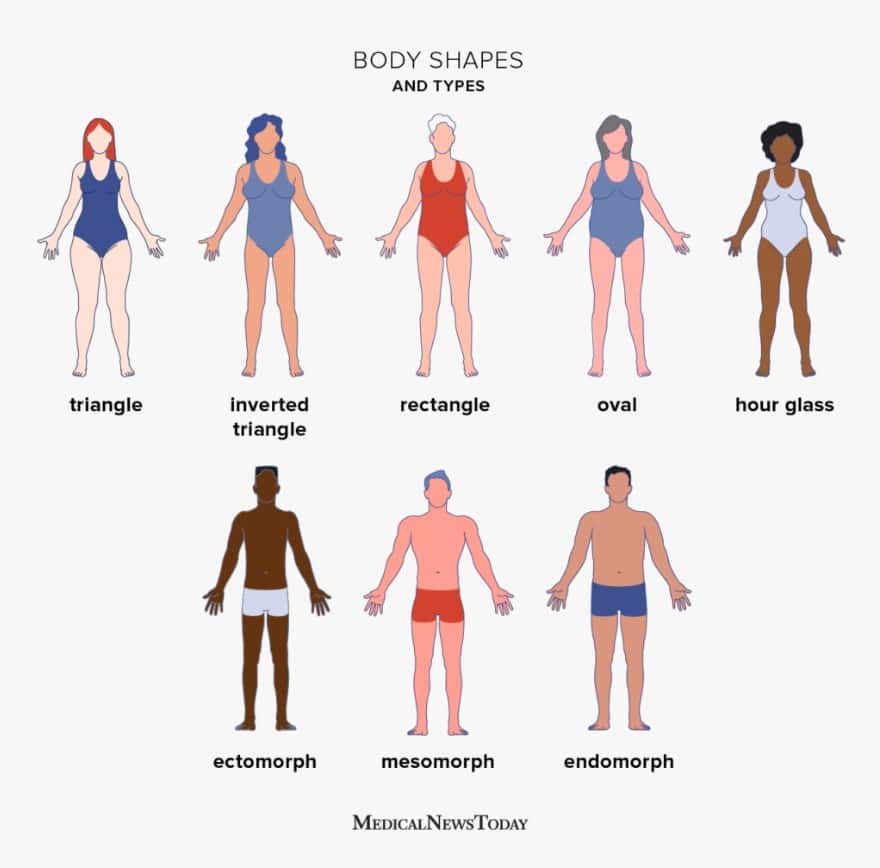
AB: Yeah, it is. It’s more pear-shaped. I know what you’re talking about, but it’s easier to either do that or even if I don’t tell them what it is. Some initially say, “I don’t want to be apple-shaped.”
That means you have great legs and probably pretty arms, and you’re going to do some things to minimize the waist, bring attention to the middle, a way to give yourself a waist. You just be gentle with people because we are what we are. There are great ways to accentuate good parts, create balance, and camouflage things you’re self-conscious about.
If I like a particular brand or a store, is that dangerous just to keep shopping there all the time? I like John Varvatos, but not as much these days as I did a few years ago.
AB: That is a plus because you know what size works for your body type. Let’s say, for example, there’s a brand-like theory. In theory, pants are made for thin people with little shape. They are just rectangular and built. For anybody with any kind of curves or a backside, theory pants will not work. It doesn’t matter how much you want them to; they won’t fit you.
Once you know that, if you’re that person that does have that boyish type figure, then that for sure is like, “Well, I’m going to check theory before I check anything out. I will check John Varvatos to see what he’s doing.” Also, with the core pieces, you can say, “Okay, I want the same pants done in gray, navy, and khaki.” You can knock it out in one fell swoop if that’s a piece that works well for you. It’s a great idea.
For fashionistas, it’s their hobby to try all the new brands and dress, fluff themselves up. They will go to all the stores, try different things. But it’s great to have go-to brands for people that live busy lives and have other things on their minds.
Yeah. What about stores? I used to love Barneys. It’s sad.
AB: We miss Barneys a lot because there’s nothing that took its place.
It isn’t vanity to care about your appearance. Your style should reflect the best parts of you. Share on XWhat happened there? How did they go out of business?
DF: Lots of different things. It started with the rent. But yes, having a go-to store, we don’t need to reinvent the wheel. If you find a perfect brand that works for you, start there. A lot of guys do that step and repeat.
Mom said, “If you love these pants, order in multiple colors so you don’t have to think about it.” You know that it fits. Once you need something new, you don’t have to spend time figuring out something else; you can just order it. Or if there’s a store that you love curation, then for sure, always start there, go in, and shop that way.
One thing to remember for everyone is how you do anything is how you do everything. If you put in effort to get dressed, your shirt is wrinkled. If you don’t take that extra step, it throws off the whole look.
The people who say to you, “You always look so masculine,” or “You always look so feminine.” You’re almost saying, “Oh, I wish I could look like that. Why can’t I figure that out? Or maybe I feel like I am not, so I wonder why. How do I change that?”
That’s how I’m working with a stylist and being thoughtful of everything, and people don’t just show up looking so fabulous. A lot of thought is put into it, and it’s all you do. It’s the beauty, and it’s the hair. It’s the whole look head to toe, taking the time to steam. As Mom said, “Take care of the shoes and make sure you smell nice, and that’s your reputation.”
Perception is reality. Whether you feel that way, people think about you because of how you show up, and people remember. I was an assistant at Barneys 10 years ago. They would remember these things, which is so crazy.
Being thoughtful and presenting yourself how you want to show up in the world will be who you are and set you apart because most people don’t do it. That’s how you’re going to achieve all the goals in your life. Like you’re saying, peacocking. You can do that whether you are getting that promotion, accomplishing your career goals, getting that romantic partner, closing the deal, or whatever else. Because you’re looking fabulous, you’re feeling confident, showing up, and ready to do what you want.
You’re not distracted by, “Oh, this is too tight. I need to pull this down or things like that.” You can not even worry about it and then do your work or concentrate on the conversation. I’ll have conversations with friends at a party, and they’re like, “Oh, shoot, I shouldn’t have worn this.”
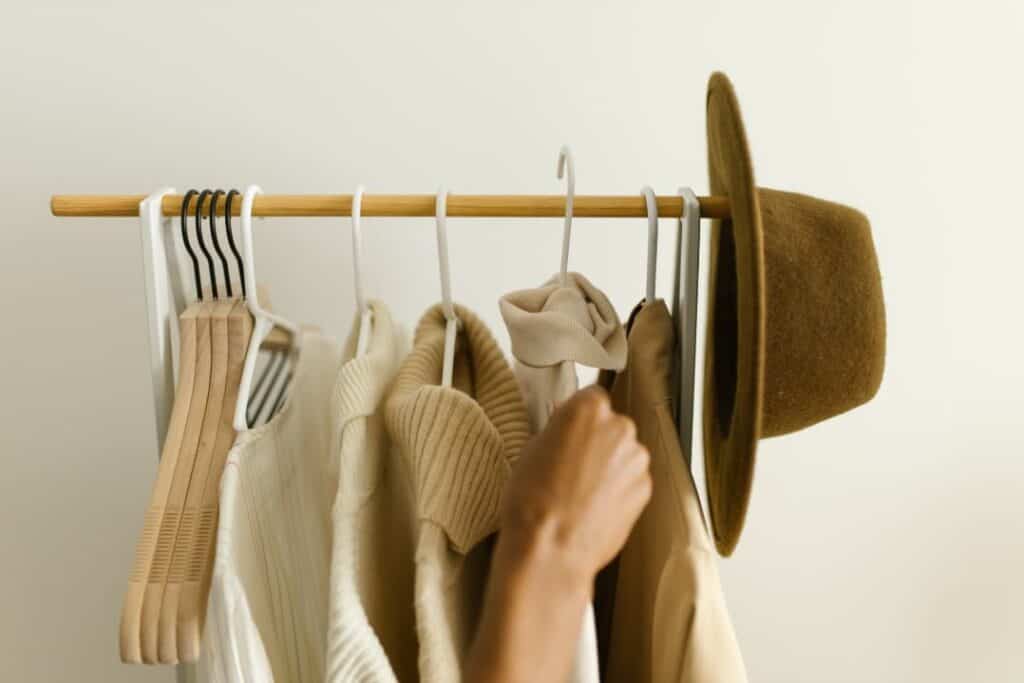
The whole time in their head, they can’t be present and have fun at the event because they’re self-conscious about their outfit.
AB: So many people, what they forget to do is close their eyes and think about two things. For you, Stephan, if you are going somewhere to do something for the first time, picture out, “How would I want someone to look in that role?” Let’s say you’re bidding on a house, and three others are bidding on it. They don’t even know they’re doing it, but they are looking at these three different people. If the broker and I were selling the house, I would go with the one that looked blank.
If I were interviewing someone for this position, what would I want them to wear? What would make me think they didn’t know what they were doing? Or they would always be late. What would make them feel this person looks like I would want someone? I want this person as an addition to our company.
Absolutely. Similarly, if I’m meeting with a prospect on Zoom, how does my background look? If I’m in their shoes, imagining being the prospect and making a decision, who do I want to hire?
AB: Right, exactly.
I love what you said, Delia, about how you do one thing, how you do everything because if somebody is not well-kept up in their appearance or their background is a mess on Zoom, you can extrapolate that to how they’re going to do with your marketing campaigns.
DF: Exactly. Yes, for sure. Stephan, Zoom and this digital world do not mean more casual. We need to all remember that. That’s important because I cannot tell you every single interview. This is at all age levels, but I’m interviewing students who are Gen Z. Every single one of them shows up with messy hair, sitting on an unmade bed in a white t-shirt, to an interview.
No one would be getting them if we were hiring them to be forward facing. It’s insane. We just all need to remember that just because you’re at home getting on an interview, if you are trying to meet with a client, or you’re having a meeting with a brand, and you want them to hire you, then you need to show up. People may reprimand me for saying that.
AB: No. It’s information to help them get what they want. Which, in turn, would you pick? It’s the story that I was telling about those lawyers. The lawyer team went to meet with the head of a music company, so they thought they should dress more casually. The feedback they got was I thought lawyers wore suits.
He thought they didn’t care enough to wear their finest to meet him. They were so surprised by what it does. That’s why this has not so much to do with fashion but much more about empowering yourself, doing whatever you can to help yourself in whatever endeavor you want.
You can end up self-sabotaging if you have these go-to favorites in your closet that are worn out, the style has changed, or the fashion has changed. They’re no longer a good look for you, but you keep hanging on to it. You need to pare down your wardrobe to make room for new stuff and not just keep adding.
I know that Alison, you do closet edits with your clients. How important is that? How often? And what’s involved?
AB: It’s certain times in your life too. Often, it’s after someone has had a child, ten years after college, or the kids are getting older. They’re leaving the nest. These times when life is changing for you, and you stop from it. You realize. “I used to think this looks so great on me, and these jeans were so great. I love this blazer. It doesn’t seem so great anymore.”
Check in with yourself every few years. Try on that favorite go-to piece. If it looks like that’s not the jacket you’re going to wear to go out to dinner anymore, then maybe it’s time to replace that because what’s going to happen is someone’s going to come in if you hire someone to do this with you, and it’s going to be all these piles.
This pile goes to charity. This pile is nice enough that it could go to be consigned. This pile is for alterations. I often create a maybe pile because I don’t want to tell people immediately that that’s horrible. Some people, I can say, “Nope, that’s got to go. We’re bringing this in.”
A lot of times, I’ll just say, “Well, how do you feel about that?” They say, “I had it for a long time, but it’s my favorite,” or “My girlfriend gave me this shirt.” Maybe we don’t throw it away or give it out, and we’ll just put it over here for a little while. Maybe we bring in something new, and then eventually, it can just go on its way more gently.
Yes, if you keep adding things in, it makes a big mess, and you can’t find anything. I hear it over and over again. The less you have in your closet, the more you must wear. When you go through your closet, people invariably say, “Oh, I forgot I even had that. That’s cute. Oh, dear, this one still has a price tag.” They’ve got it so cluttered that they don’t even know what’s in there anymore.
Yeah, that reminds me of episodes of Hoarders, the TV show.
AB: Exactly. I have people go, “Am I a hoarder of blue jeans?” Let’s try them on because some don’t fit you the way anymore.
Yeah, that’s funny. Anything you want to add, Delia, about closet edits? The last question before we wrap up is, how does one get inspiration for their style from the internet? Do they go on Pinterest? Do they go on YouTube? Do they do Google Images searches? Are they seeking celebrities, models, and YouTubers to emulate their style? What’s the process here?
AB: All of those things, movies, Netflix, everything. You can get inspiration anywhere, people just walking down the street. As I keep saying, you’re wasting your time until you know your body type. There’s a style right now where the blue jeans for women are the old denim, the thick with no stretch, and oversized. People are wearing those with little crop tops or with a big oversized shirt over them.
That works for a certain group of people. But for most people, it does not work. They’re seeing it on TikTok and Instagram. That’s like the trend, so they want to do it, so they keep buying these expensive oversized jeans, putting them on, and they’re like, “I feel these things swallow me. I just don’t feel attractive at all.”
The same thing for men with those super skinny pants. If you have a little bit of a belly, and you’re wearing a tight shirt and these tight pants, you won’t feel like you’ve got it going on. You’ll be self-conscious that the buttons may be straining your tummy.
Once you know your body type, you start looking for those celebrities. You can google if you’re a woman who has an hourglass figure. And then you see all these different people, and they’re like, “Oh, okay, well, let’s see.”
Of all of these women, I’m going to look at pictures of them and see what they picked, and also one that I liked the way she dresses, so her style can inspire me. Whereas if you have a figure-eight figure, this little Coco Chanel-type style icon, that’s never going to work because that’s made for people that go straight up and down.
Style is a reflection of your entire life's essence and goes beyond clothing. It extends to how you decorate your home and the places you explore. The art of living with style allows you to embrace your passions and curate uplifting… Share on XYou can tell yourself, “That’s not work for me. When I shop from now on, I will quit buying these little Chanel-type suits and jackets to try and wear with jeans because it won’t work for me. This is the right jacket, the third layer piece for me.”
You’ll also start noticing when you’re walking down the street, “Oh, no, she’s got broad shoulders. She should be wearing something that brings attention to the middle.” Once you start learning these things about yourself, you’ll start seeing that person is right on with their style because they have a curvy figure, so they’re wearing a wrap dress that shows up at their waist. And then it starts making more sense to you.
It’s like learning a new skill. Understanding, “Okay, if I have broad shoulders, puff sleeves are not what I need to wear. Even though everyone is making puff sleeves right now, that is something I need to stay away from that. I need to look for things that come down in the middle: great buttons, V-neck tops, and things that take attention away from the shoulders.” Don’t accentuate them if that’s something that you’re self-conscious about. Once you know that, then the fun begins.
That’s awesome. Anything you’d like to add before we wrap up, Delia?
DF: It can get very noisy. In modern life in 2023, there are many images, videos, people, and daily stimuli. It could be easy to get confused about style.
One thing to think about is to block out the noise. “I have this event. What should I wear?” Tap into your instinct. What is it that you’re feeling? What do you want to wear? Who cares when everyone else is wearing it?
You may be more self-conscious, you’re not super competent right now, and you want to wear what everyone else is wearing, so that’s fine—style versus fashion.
Another thing is wearing a full Gucci look head-to-toe in fashion. That’s not style. Style is creating an outfit you embody and feel fabulous, instead of a designer doing that for you or a merchandiser. You can get excited about outfits and things.
If you see something online and keep in mind, “Oh, okay, I have at least one piece or the full thing in my closet,” “Oh, that’s a new way to put it together,” or, “Oh, here’s this full outfit, and maybe I just need one piece, and that will bring it all together.” There are ways to get inspired without getting and feeling confused.
Less truly is more. The tendency would be. “I need all the things. I can’t give these away.” If you clear out the closet, you can make so much with 30 pieces. It makes you dress much easier. Your mind is less cluttered. It can be a fun, simple, exciting exercise versus looking at all this stuff and being like, how am I supposed to get dressed?
You can do more with less. That’s why doing the closet edit, getting the core wardrobe, adding fun pieces, and then getting dressed in shopping will be a much more enjoyable experience.
Yeah, that’s awesome. I enjoyed this conversation. Thank you both. I’m inspired to do some refreshing with my wardrobe.
AB: Check your shoes, check your heels, check your soles.
Yeah, exactly. Thank you so much, Delia and Alison. Thank you, listener, for going on this journey with us into fashion and style. I hope you do not just take this as information but apply it in your life because it will make a difference.
It gets to your self-confidence and how you show up in the world. We’ll catch you in the next episode. I’m your host, Stephan Spencer, signing off.
Important Links
Connect with The Style That Binds Us
Connect with Alison Bruhn
Connect with Delia Folk
Businesses/Organizations
Fashion Institute of Technology
School of Style
William & Mary
People
Previous Get Yourself Optimized Episode

